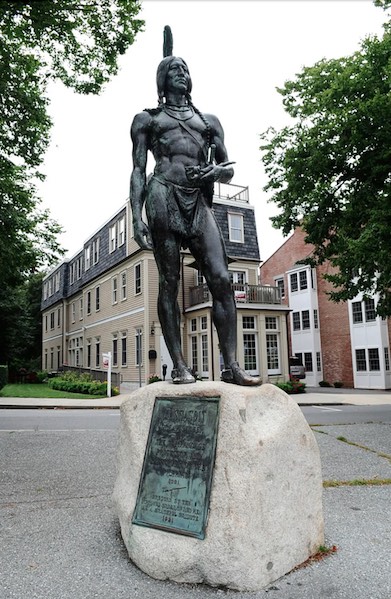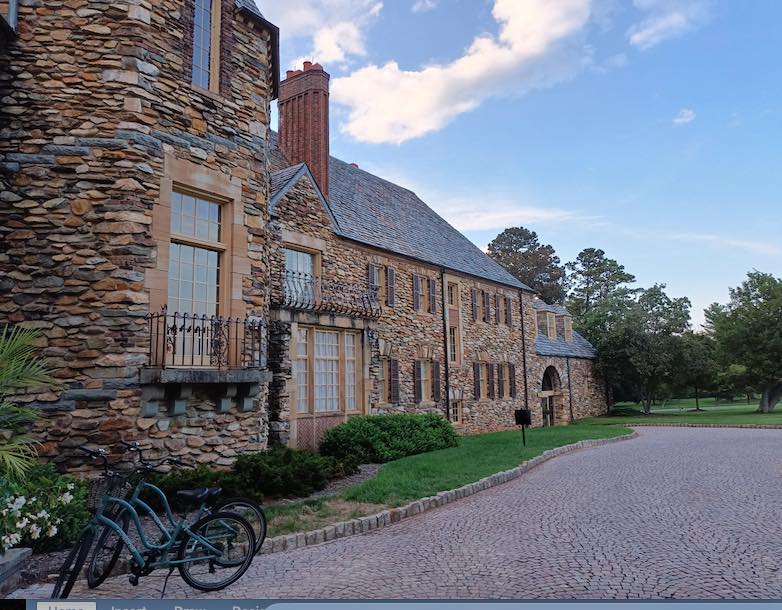“A spetiall instrument sent of God for their good beyond their expectations.”
Gov. William Bradford (Regarding Squanto)
I can clearly recall the day, in 6th grade we began to study the landing of the Plgrims in Massachusetts. The colony was ill-equipped for the weather and they were starving when suddenly a Native American appeared, speaking fluent English, and offering assistance. Even then I wondered where this man learned to speak fluent English. Little did I know how convoluted the story was and how intertwined the lives of the Indigenous people and the Pilgrims were. Tisquantum, known in legend as Squanto, has faded into much of the story of the first Thanksgiving but his salvation of the Pilgrims, by interpreting for them and teaching them about New World food techniques and sources, is less prominent in the overall chronicle.
Squanto was born around 1580 into the Patuxet Tribe of the Wampanoags, People of the First Light. He, and about 25 other natives, were enticed aboard a British slave ship bound for Spain. As many as 5.5 million natives were enslaved from 1492 and 1880. With assistance he escaped, fled to London and was employed by John Slaney the treasurer of Newfoundland. From Newfoundland he worked aboard another ship that took him closer to Patuxet. #Squanto
In the New World European explorers spread the plague, The Great Dying, from 1616-1619. The plague wiped out 2/3 of the 70,000 indigenous people in the 69 Patuxet villages. When the Pilgrims landed the bones of the dead littered the landscape and they viewed it as a sign that God had made a way for the Puritan faith to flourish.
In 1609 the Puritans had immigrated from England and settled in Leiden in the Netherlands, for 11-years, but the Britishcontinued to harass them. Finally, in 1619, the Dutch Merchant Adventurers financed a land patent near the Hudson River including provisions, two ships, the Mayflower and the Speedwell.
The Leiden American Pilgrim Museum is housed in Leiden in a house constructed in 1365. The 2-room museum has exhibits reflective of a room the Pilgrims might have inhabited and a room that showcases medieval décor. Due to its size reservations are encouraged.
The Pilgrims sailed from the port of Delfshaven near Rotterdam. On August 1, 1620. The Speedwell, originally a 1577 warship, docked in Southampton to board passengers but it began to leak. The 102 Pilgrims were then placed aboard the 106-ft. Mayflower. The Mayflower landed near Plymouth Rock on December 18, 1620. More than 50% of the party died the first winter in Massachusetts, The Starving Time. The first Blacks arrived in Plymouth Colony between 1623 and 1640. They were accepted into the Plymouth community and served in the Plymouth militia.
Squanto appeared shortly after the Pilgrims came ashore. He functioned in a variety of roles including peacemaker, notably for Chief Massasoit of the Pokanoket tribe. Squanto helped negotiate a peace treaty with Chief Massasoit. The two groups shared a harvest feast, Thanksgiving, in 1621, to solidify their “partnership.” A majestic sculpture of Chief Massasoit on the First Thanksgiving stands in Plymouth.
Squanto was the last member of his tribe. He had been kidnapped, enslaved, traveled the world and is believed to have been poisoned by either the natives or the Pilgrims as a result of a belief that he had helped betray one group or the other.
The Mayflower Pilgrims landed on a 600-million-year-old rock of Dedham granodiorite. It has been moved several times and is today in a granite portico, the first national landmark. It is inscribed with the year 1620, placed there at a later date.
Plimoth Patuxet Museums immerses visitors into the 17th century and invites you to a number of living history sites, the Mayflower II, Plimoth Grist Mill, 17th-Century English Village and Historic Patuxet.
Historic Patuxet interprets the culture and lifestyle of the Native population. Inside a reconstructed wetu (home). You can participate in activities in the campsite including cooking, weaving, gardening and toolmaking. The tribe also consists of Wampanoag descended from those the English enslaved in the 1670s.
The original site of the English Village is 2.5-miles from the recreated colony. Homesites are denoted along Leyden Street by historical plaques. Structures are interpreted by authentically clad docents.
Plymouth Colonists’ original 1636 grain mill is situated on Town Brook. Tours are offered.
No one is certain what happened to the original Mayflower. Many historians theorize that after it returned to England it was scrapped for timber. A full-sized replica was constructed in England and sailed to Massachusetts in 1957. In 2020 it was added to the National Register of Historic Places. plimoth.org
The 81-ft. tall National Monument to the Forefathers is on a hilltop in Plymouth, Mass, the largest freestanding granite monument in the world. Faith, a 36-ft statue is carved with symbols that represent the ideals of the Pilgrim Forefathers and was dedicated in 1889. Faith looks back to Plymouth, England with a foot on Plymouth Rock. A star atop her head represents wisdom.
Massachusetts is a year-round destination that affords the opportunity to get up close and personal with and understand those who impacted on North American history from its beginning. #VisitMa.com
Give thanks every day!










